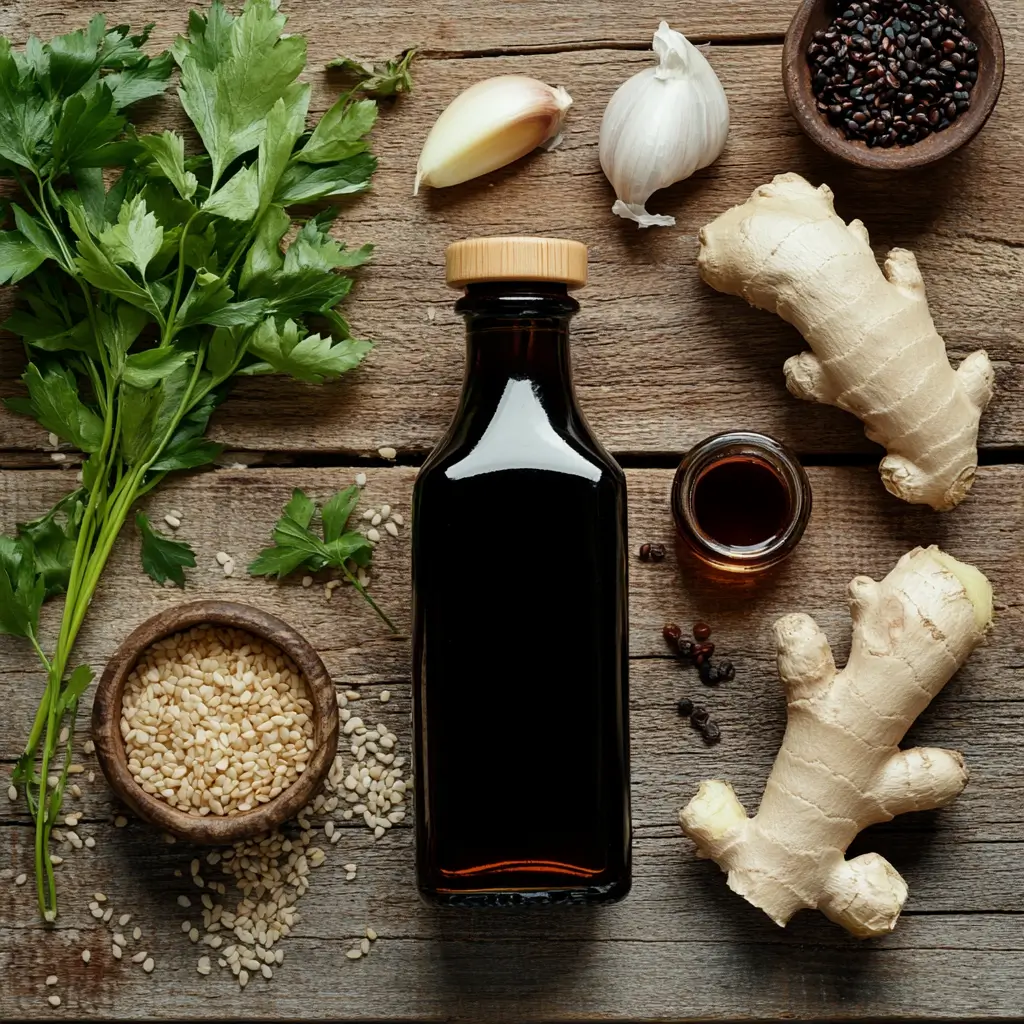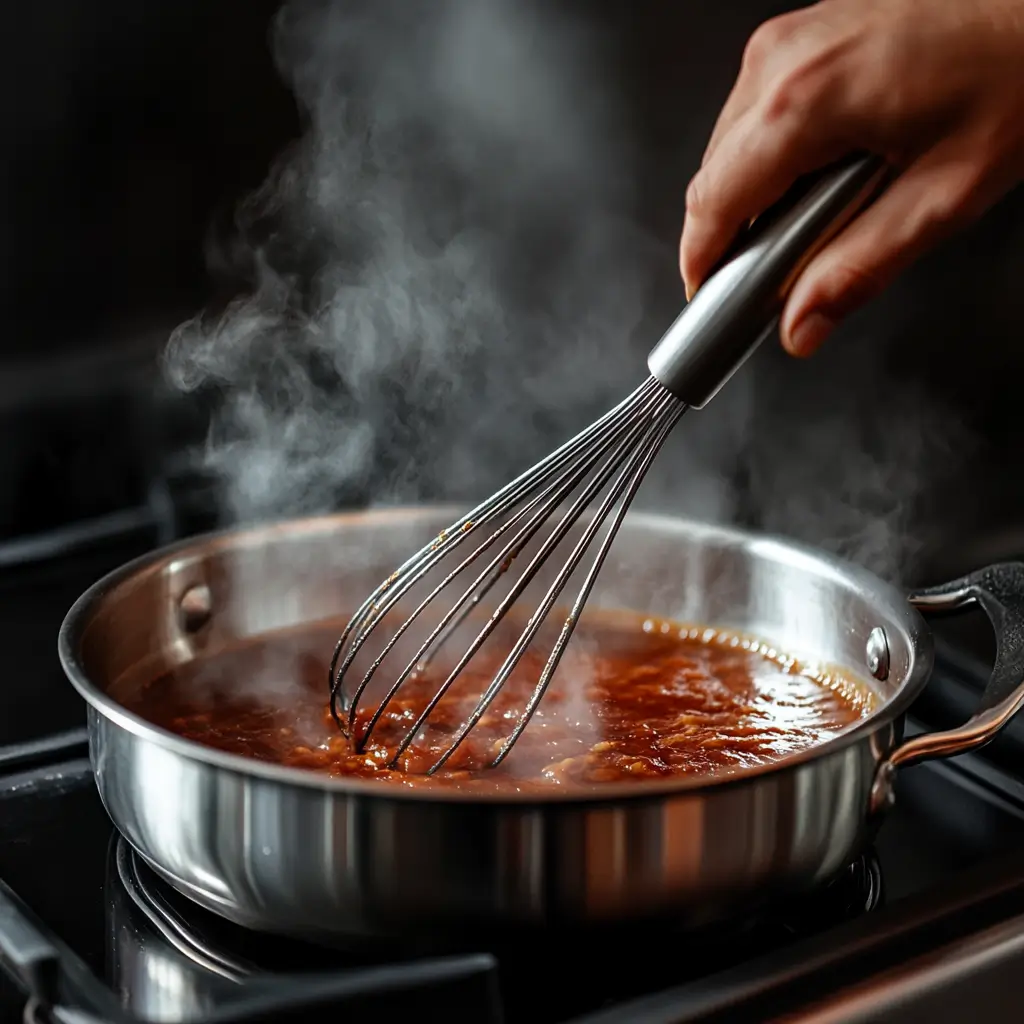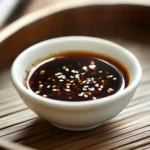Sweet, sticky, and umami-rich, teriyaki sauce is one of those magical ingredients that can transform even the simplest dish. However, although many people assume it’s vegan by default, that’s not always the case. Surprisingly, many traditional recipes contain hidden animal-derived ingredients, making it unsuitable for plant-based diets. Fortunately, there’s good news. You can make your own vegan teriyaki sauce at home with just a few clean, everyday ingredients.
As a matter of fact, this article gives you everything you need to understand what’s in your sauce, how to avoid non-vegan ingredients, and how to create a version that’s not only ethical but also bold and flavorful. In the sections ahead, you’ll learn how to craft your own vegan teriyaki sauce from scratch, discover the best substitutes, and pick up tips that will instantly improve your plant-based cooking.

How to Make Vegan Teriyaki Sauce at Home: Full Recipe and Ingredient Breakdown
Creating your own vegan teriyaki sauce is a satisfying experience. Not only does it take less than 15 minutes, but it also uses ingredients you probably already have in your kitchen. Additionally, it stores well and can be frozen for future use.
Ingredient Table
| Ingredient | Amount | Notes |
|---|---|---|
| Low-sodium soy sauce | ½ cup | Tamari for gluten-free option |
| Maple syrup | ¼ cup | Agave or date syrup also work well |
| Rice vinegar | 2 tbsp | Balances the sweetness with acidity |
| Fresh garlic (minced) | 2 cloves | Garlic powder can be used in a pinch |
| Fresh ginger (grated) | 1 tbsp | Ground ginger as an alternative |
| Cornstarch | 1 tbsp | Thickens the sauce to a glossy finish |
| Water | ½ cup | Adjust to desired consistency |
| Sesame oil (optional) | 1 tsp | Adds nutty aroma and complexity |

Additional Optional Add-ins:
- Chili flakes – for heat
- Pineapple juice – for sweetness and acidity
- Orange zest – for brightness and citrus aroma
Although these additions are optional, they can help tailor the sauce to specific dishes or flavor profiles. For example, pineapple juice adds a tropical touch that’s perfect for tofu skewers or grilled veggies.
Step-by-Step Instructions for Making Vegan Teriyaki Sauce
Step 1: Mix the Base Ingredients
Firstly, in a small saucepan, combine the soy sauce, maple syrup, rice vinegar, garlic, ginger, and water. Stir well so everything is evenly mixed. Secondly, place the pan over medium heat and bring the mixture to a gentle simmer. Stir occasionally to prevent the garlic and ginger from sticking to the bottom.
Step 2: Add the Thickener
While the sauce is heating, mix the cornstarch with two tablespoons of cold water in a separate bowl. This forms a slurry, which is the key to thickening the sauce properly. Then, once the sauce is bubbling, slowly whisk the slurry into the pot. Continue whisking to prevent clumping.
Step 3: Simmer Until Glossy
After adding the cornstarch mixture, continue simmering for 5 to 7 minutes. Meanwhile, the sauce will begin to thicken and take on a shiny, rich texture. At this point, taste and adjust. If it’s too salty, add a bit more water or maple syrup. If it’s too sweet, add a splash of rice vinegar.

Step 4: Cool and Store
Once the sauce has thickened, remove it from heat and let it cool. Afterwards, pour it into a clean glass jar or container. Store it in the fridge for up to a week. For longer storage, freeze in silicone molds or an ice cube tray. That way, you can pop out a portion whenever you need it.
If you’re loving the bold, umami-packed flavors of this vegan teriyaki sauce, then you’ll definitely want to explore more plant-based recipes that deliver on depth and satisfaction. For a savory twist with a kick, check out our Vegan Birria Tacos Recipe.
Step 5: Use in Real Recipes
After preparing the sauce, use it while it’s still warm or let it cool to room temperature. Then, drizzle it over sautéed greens or toss with soba noodles for a quick lunch. Alternatively, use it as a glaze for roasted eggplant or sweet potatoes.
Step 6: Adjust Texture If Needed
If your sauce is too thick, add a splash of water or orange juice. Conversely, if it’s too thin, simmer it a bit longer with extra cornstarch slurry. That way, you achieve the ideal consistency every time.
Step 7: Flavor Layering
Add your sauce at different stages for different effects. For example, cooking tofu with sauce builds caramelization, while adding it at the end preserves brightness. As a result, you create depth and contrast in every dish.
Craving more bold, saucy inspiration? Then don’t miss our Birria Taco Sauce Recipe.
Why Many Store-Bought Teriyaki Sauces Aren’t Vegan
Even though teriyaki sauce seems simple—just soy sauce and sugar, right?—many versions contain non-vegan surprises. These may include:
- Honey: Often used instead of sugar
- Refined Sugar: Sometimes processed with bone char
- Fish-Based Additives: Ingredients like dashi, anchovy paste, or bonito flakes
- Animal-Derived Thickeners: Gelatin or animal fats in rare cases
As a result, always check the label. Look for certified vegan brands or make your own to stay safe. Moreover, even “organic” sauces may use honey, so don’t assume they’re vegan unless explicitly labeled.
Additionally, sauces labeled “teriyaki glaze” often contain extra thickeners and artificial colors. While they look appealing, they usually have preservatives and additives that don’t add nutritional value.
Top Substitutes for Vegan Teriyaki Sauce: Smart, Plant-Based Alternatives
Although nothing quite matches the sweet-savory balance of teriyaki, there are several great substitutes. These are useful when you’re missing an ingredient or just want to try something new.
1. Coconut Aminos + Maple Syrup
Coconut aminos are naturally lower in sodium and slightly sweeter than soy sauce. When paired with maple syrup, they make a lighter, allergy-friendly version of teriyaki. This combo works great in salad dressings or light stir-fries.
2. Hoisin Sauce + Rice Vinegar
Hoisin has a thicker, richer texture. While it’s not a 1:1 swap, adding vinegar lightens it and brings the needed acidity. Just be sure to check the ingredients list for fish sauce, which appears in some brands.
3. Miso Paste + Ginger + Agave
Mixing white miso with agave and ginger creates a funky, complex flavor profile. It’s not traditional, but it’s deeply satisfying—especially when brushed onto grilled mushrooms or eggplant.
These substitutes offer flexibility and creativity. Additionally, they help you avoid common allergens and experiment with global flavors.
Creative Ways to Use Vegan Teriyaki Sauce in Everyday Meals
Once you’ve mastered this versatile sauce, you’ll want to use it in everything. Moreover, because it complements both simple and elaborate dishes, vegan teriyaki sauce quickly becomes a staple in any plant-based kitchen.
For example, drizzle it over crispy tofu for a sweet-savory twist. Or, toss it with roasted vegetables like carrots and cauliflower.
Additionally, try it as a glaze for veggie burgers or as a stir-fry base. Even better, mix it into rice or quinoa for an instant flavor upgrade.
Pro Tips and Variations to Customize Vegan Teriyaki Sauce
Add Heat and Sweetness Balance
Not everyone enjoys the same level of spice or sweetness. Therefore, start with small amounts of chili flakes or sriracha if you want a little heat. Then, adjust the maple syrup gradually to balance it out. Consequently, you get a more personalized flavor profile.
Switch Up the Aromatics
Fresh garlic and ginger add authenticity, but alternatives exist. For instance, garlic paste saves prep time, and ground ginger offers longer shelf life. Equally, fresh herbs like cilantro or scallions can add a burst of flavor when serving.
Use Citrus for a Fresh Twist
Although not traditional, adding citrus elements like lime or orange zest enhances brightness. Moreover, a splash of pineapple juice pairs beautifully with grilled tofu or veggie skewers.
Stir Fry, Dip, or Marinate
Besides being a sauce, it also works wonderfully as a marinade. Simply soak tofu or mushrooms for 30 minutes before cooking. Similarly, use it as a dipping sauce for spring rolls or dumplings.
How to Store and Freeze Vegan Teriyaki Sauce
After preparing your vegan teriyaki sauce, you’ll want to preserve that flavor for future meals. Firstly, let the sauce cool completely. Then, pour it into an airtight glass container and refrigerate it for up to one week.
Secondly, if you prefer to make a larger batch, freeze individual portions in an ice cube tray. Once frozen, transfer them to a ziplock bag. Consequently, you’ll always have sauce on hand—just reheat and stir before using.
Additionally, labeling your containers with the date helps prevent confusion. As long as it’s stored properly, it keeps its flavor and consistency for at least two months.
FAQs: Answering Common Questions About Vegan Teriyaki Sauce
Why is teriyaki sauce not vegan?
Traditional teriyaki sauces often include non-vegan ingredients, such as honey, fish-based seasonings, or refined sugars processed with animal bone char. Therefore, reading the label or making it yourself is the best way to ensure it fits your vegan lifestyle.
What is a good substitute for teriyaki sauce?
If you’re in a pinch, there are several plant-based alternatives. For example, mixing coconut aminos with maple syrup and garlic creates a quick substitute. Likewise, hoisin sauce with a dash of rice vinegar adds a sweet-savory kick. Notably, both options are easy to prepare and allergen-friendly.
Can I freeze vegan teriyaki sauce?
Yes, you absolutely can. In fact, it’s one of the easiest sauces to freeze. Use small jars or ice cube trays, and always thaw in the fridge for best results. Afterward, reheat it slowly on the stove and whisk it to restore consistency.
What can I use vegan teriyaki sauce on?
This sauce pairs well with nearly everything. Think stir-fries, noodles, grilled tofu, roasted vegetables, grain bowls, and even plant-based sushi. Furthermore, it adds amazing depth when used as a glaze for veggie skewers or jackfruit tacos.
Does vegan teriyaki sauce taste different from regular?
Not necessarily. Because the base ingredients like soy sauce, ginger, and garlic are naturally vegan, the flavor is remarkably close. Actually, many people prefer the cleaner, fresher taste of homemade vegan teriyaki sauce, since it’s free of preservatives and artificial sweeteners.
Conclusion: Why Vegan Teriyaki Sauce Belongs in Your Kitchen
In conclusion, vegan teriyaki sauce is more than a flavorful glaze—it’s a gateway to better plant-based meals. Because it’s so versatile, you can use it across a variety of dishes without getting bored. Additionally, the ability to control ingredients ensures both health and ethical alignment.
From stir-fries to marinades, and from noodles to roasted vegetables, this sauce enhances meals with minimal effort. Therefore, taking the time to make it yourself empowers you in the kitchen and helps you embrace a cleaner, more conscious way of eating.
Whether you’re new to plant-based cooking or looking to elevate your go-to recipes, vegan teriyaki sauce is an essential addition to your culinary toolkit.
Table of Contents

Vegan Teriyaki Sauce: The Ultimate Plant-Based Recipe
- Total Time: 15 minutes
- Yield: About 1 cup of sauce
Description
This homemade vegan teriyaki sauce is quick, flavorful, and incredibly versatile. Made with pantry staples like soy sauce, maple syrup, and fresh ginger, it delivers the perfect balance of sweet, savory, and tangy. It comes together in under 15 minutes and can be customized with optional add-ins like chili flakes or pineapple juice for unique flavor twists. Ideal for stir-fries, marinades, glazes, or noodle dishes, this sauce is a plant-based essential you’ll return to again and again.
Ingredients
½ cup low-sodium soy sauce (use tamari for a gluten-free option)
¼ cup maple syrup (or substitute agave or date syrup)
2 tbsp rice vinegar
2 cloves fresh garlic, minced (or ½ tsp garlic powder)
1 tbsp fresh ginger, grated (or ½ tsp ground ginger)
1 tbsp cornstarch
½ cup water (adjust for desired consistency)
1 tsp sesame oil (optional, for added aroma and depth)
Optional Add-ins:
Chili flakes (for heat)
Pineapple juice (adds sweetness and acidity)
Orange zest (adds citrus brightness)
Instructions
Mix Base Ingredients: In a small saucepan, combine soy sauce, maple syrup, rice vinegar, garlic, ginger, and water. Stir well.
Simmer: Place the saucepan over medium heat and bring to a gentle simmer, stirring occasionally.
Make a Slurry: In a separate bowl, whisk cornstarch with 2 tablespoons of cold water to make a smooth slurry.
Thicken: Once the sauce starts to bubble, slowly whisk in the cornstarch slurry. Continue stirring to avoid clumps.
Simmer Until Glossy: Let the sauce simmer for 5–7 minutes until it thickens and becomes glossy. Taste and adjust: add more vinegar if too sweet, or more syrup if too salty.
Cool and Store: Remove from heat and let cool. Transfer to a clean jar. Store in the fridge for up to 1 week or freeze for longer storage.
Use and Customize: Use as a glaze, marinade, or stir-fry sauce. Adjust thickness by adding water (or orange juice) if needed.
Layer Flavor: Add sauce at different cooking stages to create depth – early for caramelization, later for brightness.
Notes
For a tropical twist, add 2 tbsp of pineapple juice.
Use as a stir-fry sauce, tofu glaze, or even as a dipping sauce for dumplings.
Freeze in ice cube trays for easy portioning and long-term storage.
- Prep Time: 5 minutes
- Cook Time: 10 minutes
- Category: Lunch
- Cuisine: Asian-Inspired
Nutrition
- Calories: 35 per serving
- Fat: 0.5g
- Carbohydrates: 8g
- Protein: 0.8g

1 thought on “Vegan Teriyaki Sauce: The Ultimate Plant-Based Recipe”